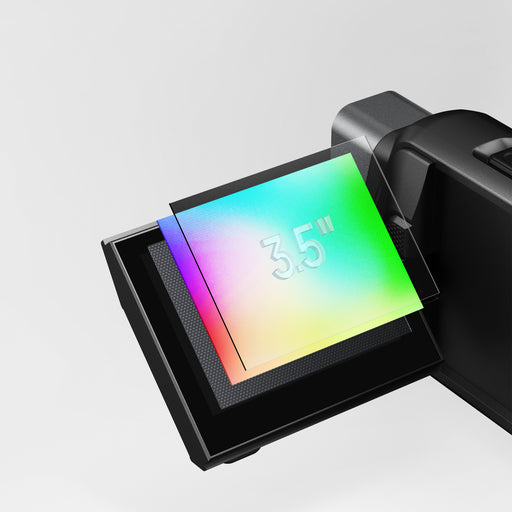
TTS300 Infrared Thermal Imaging Camera
See beyond your naked eye with infrared vision!

INFRARED THERMAL IMAGING CAMERA WITH FLIP-OUT SCREEN
Thermal cameras are the next best thing to x-ray vision! While regular cameras record visible light, thermal cameras detect infrared radiation—or temperature. Thermal cameras used to be reserved only for scientists or engineers. Now, advances in thermal sensors, LCD interfaces, and rechargeable batteries have allowed Teslong to build some of the most capable imaging inspection tools on the market for a cost that’s hard to believe. They're an excellent tool for locating people in the dark, finding short circuits, inspecting buildings for water leaks, insulation placement, and many more uses!
The Teslong TTS300 includes an infrared array of 256x192 for a total of 49,000+ points of temperature detection. This device doesn’t just see temperature variations, it can also calculate the actual temperatures of the surfaces you point it at. Six different color palette options are available at the push of a button to optimize your screen to whatever thermal landscape you are viewing.
The Teslong TTS300 has a telephoto lens and macro focus mode, allowing you to see anything—near or far—in stunning detail. Perfect for house inspection, automobile diagnostics, electronics repair, outdoor adventure, and night hunting. See beyond your naked eye by using infrared vision!

The adjustable focus allows the viewer to see objects as close as 8 inches—just turn the focusing ring to adjust the lens into macro mode.

Combine the medium telephoto optical lens with a 1-4x digital zoom to see at a distance, then adjust to macro mode to see details up close.
The TTS300 thermal camera can not only detect the target temperature, but also automatically identify the lowest temperature point and high temperature point. At the same time, the range of detection temperature can be set to eliminate interference items.

The color palette button cycles through six different color modes to provide the best thermal contrast against a range of backgrounds.













 Sold out
Sold out
Technical Specs Infrared Sensor Resolution: 256x192 pixels (VOx Uncooled)Screen Resolution: 1024x768 OLEDAngle of View: 7.0°x5.3°Frame Rate: 25 ...
View full details

Technical Specs DISPLAYScreen Size: 3-inch LCD ScreenScreen Resolution: 640x360 pixelsCONNECTIONType-C Port:1. Charging the device2. Data Transf...
View full details

Technical Specs Model Number: TTM120SInfrared Sensor Resolution: 120x90 pixelsField of View (FOV): 38°-50°Pixel Size: 17 umSpectral Range: 8~14 ...
View full details
 Sold out
Sold out
Technical Specs Infrared Sensor Resolution: 260x200 pixelsImage Resolution: 640x480 pixelsFrame Rate: 50 HzFrequency Band: 8-14 umDigital Zoom: 1x,...
View full details
 Sold out
Sold out
Technical Specs Infrared Sensor Resolution: 256x192 pixelsScreen Resolution: 640x480 pixelsDisplay: 3.5 inAngle of Screen Rotation: 270°Frame Ra...
View full details